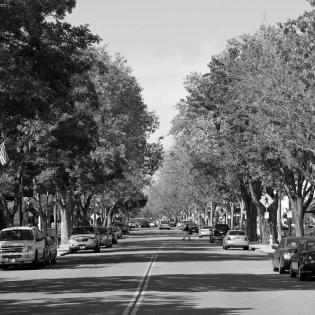Connecting People Through Art
We look at two examples of art connecting diverse people. The first example is a man who connects people around the world by dancing badly and capturing cultural expressions of dance and community. The second example is an artist who leaves free paintings around Boston (and then around the world) to encourage people to be kind to others. We discuss ways to pay forward kindness and connect diverse people through art.
The learner will:
- identify the value in making connections to diverse people.
- describe ways to use art to promote the common good.
- access to the internet for the "Where the Heck Is Matt" video
- description of the Smile Boston summary
- inclusion: the act of providing access to opportunities and resources, especially for people who might otherwise be excluded
- social responsibility: the belief or ideology that a person has an obligation to act to benefit society at large. This responsibility can be passive, such as by avoiding engaging in socially harmful acts, or active, such as by performing activities that directly advance social goals
- Video Project. “Where the Heck Is Matt?” https://www.wheretheheckismatt.com/
- Smile Boston Project: https://bataclan.com/smile_boston_project_secondary/sbp_artist_statement.html
Instructions
Anticipatory Set:
Read the following quote: “We are good at picking out people who are different from us. Our instincts tell us they are a threat.” (Matt Harding) Discuss whether this is accurate and how we might have gotten to that point. Discuss the possible benefits and dangers of seeing differences as a threat.
Matt Harding captured videos of himself dancing all over the world. The joyful video became popular on YouTube because Matt connected sincerely with people of widely diverse cultures. Dancing (badly), laughing, and smiling with people seemed to break many barriers. The video is called “Where the Heck Is Matt?” and can be viewed at https://www.wheretheheckismatt.com/
Note the country names and the diverse ways of making music and dancing. Discuss how this can make people see differences as something that makes us stronger. What are some ways to be more inclusive of different cultures? What is our social responsibility to people who are different that us (in any way)?
Read together the article about the Smile Boston Project: one artist’s act of spreading optimism and hope throughout the community. Bren Bataclan gives away free paintings to random people under the condition that they smile more. Discuss how Bren’s project uses art to uplift and make connections between people. Define serial reciprocity as giving generously as a way to pay forward when you receive something.
Discuss why making connections with diverse others is a socially responsible way to promote the common good (philanthropy).
Talk about how we can share art as a means to bring together people in community and uplift people or issues. Think of art in its many different forms.
Make a plan and carry it out. Keep track of what you do and the responses. Share the project on social media.
Philanthropy Framework
-
Strand PHIL.II Philanthropy and Civil Society
-
Standard PCS 05. Philanthropy and Government
-
Benchmark HS.12 Explain why private action is important to the protection of minority voices.
-
-
-
Strand PHIL.III Philanthropy and the Individual
-
Standard PI 01. Reasons for Individual Philanthropy
-
Benchmark HS.1 Define and give examples of motivations for giving and serving.
-
-
